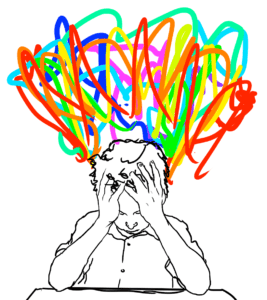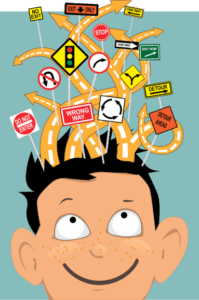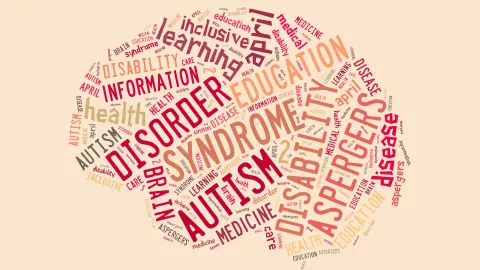Attention Deficit Hyperactivity Disorder (ADHD) and Autism Spectrum Disorder (ASD) are two conditions that are often misunderstood. Many people don’t know that ADHD and Autism are actually related, or what the differences between the two conditions are. In this blog post, we will discuss the relationship between ADHD and Autism, as well as some of the key similarities and differences between these two conditions. We will also provide information about how to get help if you think you or your child may have ADHD or Autism.
Contents
Defining ADHD
Attention-Deficit Hyperactivity Disorder is a neurodevelopmental disorder that is characterized by problems with inattention, impulsivity, and/or hyperactivity. ADHD can make it difficult for children to succeed in school and can lead to social and behavioral problems. Adults with ADHD may have difficulty keeping a job or sustaining relationships. ADHD is one of the most common mental disorders in children and adolescents, and it is estimated that about half of all children with ADHD will continue to experience symptoms into adulthood.
Defining Autism
Autism Spectrum Disorder is a neurodevelopmental disorder that is characterized by social communication difficulties and repetitive behaviors. People with ASD may have difficulty understanding nonverbal cues, such as facial expressions or body language. They may also have trouble initiating or sustaining conversations. People with ASD may engage in repetitive behaviors, such as hand-flapping or spinning. Autism spectrum disorder affects people of all races and ethnicities, but it is estimated that boys are four times more likely to be diagnosed with ASD than girls.
The Relationship Between ADHD and Autism

ADHD and Autism are often misunderstood and confused with one another. While these two conditions do share certain common characteristics,
Similarities
While ADHD and ASD are two distinct conditions, there is a strong relationship between the two disorders.
- Both conditions seem to be caused by genetics and tend to run in families.
- It is estimated that about 30-50% of people with ASD also have ADHD. The symptoms of ADHD can make the social communication difficulties associated with ASD even worse. For example, someone with both ADHD and ASD may have difficulty sustaining eye contact or staying on topic during a conversation.
- Additionally, the impulsivity associated with ADHD can lead to problems following rules or social norms. This can make it difficult for people with both conditions to function in school or work environments.
- People with ADHD or ASD often have difficulty with social interactions and may engage in repetitive behaviors.
- Both conditions are neurodevelopmental disorders that can cause social, behavioral, and academic problems.
- Moreover, both conditions are more common in boys than girls.
Differences
However, there are also some important differences between the two disorders.
- ADHD is characterized by inattention, impulsivity, and/or hyperactivity, while ASD is characterized by social communication difficulties and repetitive behaviors.
- ADHD is characterized by problems with inattention, impulsivity, and/or hyperactivity, while ASD is characterized by social communication difficulties and repetitive behaviors.
- People with ADHD may have trouble paying attention or focusing on tasks, while people with ASD may have difficulty understanding nonverbal cues or sustaining conversations.
- While many people with ASD also have ADHD, it is possible to have one condition without the other.
ADHD and ASD are both neurodevelopmental disorders that can cause social, behavioral, and academic problems. While there is a strong relationship between the two conditions, they are also distinct from one another. If you think you or your child may have ADHD or ASD, it is important to talk to a doctor or mental health professional for an accurate diagnosis and treatment plan. With proper intervention and support, people with ADHD or ASD can lead healthy life.
Diagnosis

If you think you or your child may have ADHD or ASD, it is important to talk to a doctor or mental health professional. A diagnosis can be made through a clinical evaluation that includes a review of symptoms, medical history, and family history. In some cases, neuropsychological testing may also be used to diagnose ADHD or ASD. A psychiatrist or clinical psychologist can also use rating scales or checklists to help diagnose ADHD or ASD.
Treatment
There is no single treatment for ADHD or ASD. Since they do not have a permanent cure, many effective interventions can help people manage symptoms and improve functioning. Treatment for both conditions often includes medication, behavioral therapy, and educational interventions.
Treatment for both conditions often includes medication, behavioral therapy, and educational interventions. Medication can help reduce symptoms of inattention, impulsivity, and hyperactivity.
Medication
Medicines for ADHD and autism can help improve symptoms. The most common type of medicine for ADHD is a stimulant. Methylphenidate and amphetamine are two examples of stimulants.
Non-stimulant medicines also help in treating ADHD. Atomoxetine and guanfacine are two examples of non-stimulant medicines. They work by increasing levels of norepinephrine, which is a chemical in the brain that helps with focus and attention.
Antidepressants are sometimes used to treat people with ASD. Selective serotonin reuptake inhibitors (SSRIs) are a type of antidepressant that can help improve social interaction and communication skills.
Therapy

Behavioral therapy is another treatment option for ADHD and ASD. It can help people learn new skills and strategies to manage symptoms. For example, behavioral therapy can teach children with ADHD how to stay on task and complete tasks independently. It can also teach them how to interact better with others
Educational interventions can help people with ADHD or ASD succeed in school. Individualized education plans (IEPs) are one type of educational intervention that can be used to provide students with ADHD or ASD the support they need to succeed in the classroom. IEPs are developed by a team of educators, parents, and health care professionals.
Speech therapy can help people with ASD improve their communication skills. Speech therapists can also teach people with ASD how to better understand and use nonverbal communication, such as body language and facial expressions.
Occupational therapy can help people with ASD develop the fine motor skills needed for daily living activities, such as dressing and eating. Occupational therapists can also teach people with ASD ways to manage anxiety and sensory processing issues.
Behavioral therapy helps people with ADHD and autism learn new skills and ways to manage their condition. ABA, or Applied Behavior Analysis, is one type of behavioral therapy that is particularly effective in treating ASD.
Self Help Tips
There are many things people with ADHD or ASD can do to help themselves manage their symptoms and improve their functioning.
Here are some self-help tips for living with ADHD and autism:
- Get organized: Create a daily routine and stick to it as much as possible. Use a planner or calendar to keep track of appointments, homework, and other activities.
- Break down tasks into smaller steps: This will make them seem less daunting and will help you stay on track.
- Exercise: Physical activity can help improve focus, concentration, and energy levels.
- Get plenty of sleep: Sleep is important for overall health and well-being. People with ADHD or ASD may need more sleep than others.
- Eat a healthy diet: Eating a nutritious diet can help improve focus and energy levels.
- Take breaks: When you feel yourself getting overwhelmed or tired, take a break. Go for a walk, listen to music, or do something else that relaxes you.
- Find a support group: Connecting with others who understand what you’re going through can be helpful. Support groups provide an opportunity to share tips and coping strategies.
Conclusion
ADHD and ASD are two neurodevelopmental disorders that are often comorbid. They share many similarities, such as difficulties with social interactions and repetitive behaviors. However, there are also some important differences between the two disorders. If you think you or your child may have ADHD or ASD, it is important to talk to a doctor or mental health professional for a diagnosis. There is no single treatment for either condition, but there are many effective interventions that can help people manage it.
For more information, please contact MantraCare. ADHD is a neurodevelopmental disorder characterized by difficulty in paying attention, hyperactivity, and impulsivity. If you have any queries regarding Online ADHD Counseling experienced therapists at MantraCare can help: Book a trial ADHD therapy session


